7 From compliance to connection with James Moffet
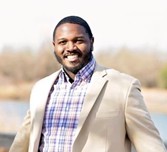
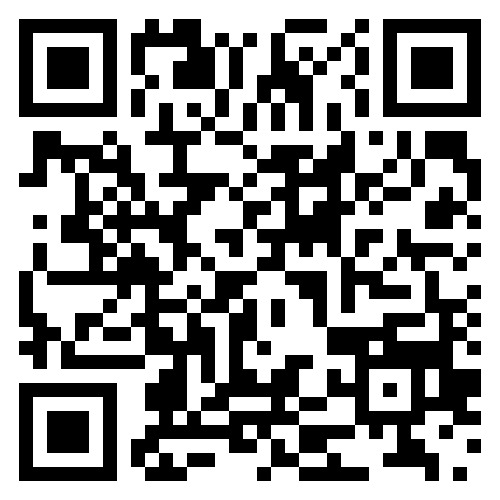
James Moffett has more than 20 years of experience in education. He began his trauma-informed journey in 2016 as principal of Derby Hills Elementary School in Kansas, where he led a whole-school transformation inspired by the documentary Paper Tigers. Under his leadership, the school shifted its focus from traditional discipline to a trauma-informed approach rooted in the science of adverse childhood experiences (ACEs). James has continued this work as Principal of Faris Elementary School in Hutchinson, Kansas. He now consults with school leaders across the country on implementing trauma-informed practices and creating safe, supportive learning environments for all students.
Learn more about James’s work, watch his webinar on trauma-informed practice by clicking or scanning the QR code.
Mr. Moffett: My dad was in the army, so I grew up as what people call an “army brat.” Because of that, I moved around quite a bit—living in places like Germany, Seattle, Washington, and eventually settling in Arizona. Despite all the moving, I knew from as early as third or fourth grade that I wanted to be a teacher. I was lucky to have some amazing educators in my life who built strong relationships with me and inspired me to follow their path.
At one point, I considered joining the Air Force. That was probably more about following in my dad’s footsteps and feeling some sense of obligation. But deep down, I knew that wasn’t the path for me—I wanted to go into education. I was fortunate to return to the school I attended as a child to do my student teaching, and even more fortunate to be hired by that same school.
In my early years, I taught kindergarten—a big surprise for me, since it wasn’t what I’d initially pictured doing. But it turned out to be an incredible experience. I got to teach in the classroom next door to my own kindergarten teacher, which was pretty special. I taught kindergarten for two years, then first grade for another two.
At the time, I was living in Arizona, and the pay for teachers was extremely low. I found myself at a crossroads: either move somewhere I could earn a living wage in education, or leave education entirely. I was—and still am—so passionate about this work that I chose to move. My family and I relocated to Kansas, where I went on to teach fifth grade for six years. I’m now finishing my fourth year as an administrator.
About three years ago, I attended the Safe and Secure Schools Conference in Manhattan, Kansas. I went with a colleague, and while we were there, we stumbled across a screening of the documentary Paper Tigers. We had never heard of the film or Jim Sporleder, the former principal of Lincoln High School featured in it.
We sat through the screening and were blown away. Jim was actually there for a Q&A session afterward, and we got to talk to him briefly, which was very cool. That night, back in the hotel, my colleague and I couldn’t stop talking about it. We both felt we had stumbled onto something golden and knew we needed to act. We reflected on how long we’d been using traditional discipline in schools without seeing the results we hoped for. It was time to try something different.
Later that evening, I found Jim on Twitter and sent him a direct message:
“Hey, I need to learn more about this. I want to jump in with both feet. I want to do something different.”
Honestly, I didn’t expect a response. To me, Jim was on another level—a national expert. I figured he probably got messages like that all the time. But to my surprise, when I woke up the next morning, I saw he had replied. Not only that, he gave me his phone number and said, “Hey, reach out. I want to help you out.”
That was the beginning of our trauma-informed journey. We’ve just completed our second year as a fully implemented trauma-informed school, following a year of piloting the approach. It’s the best decision I’ve ever made.

Our staff have embraced it wholeheartedly. They see the incredible benefits for our students every day. Jim has been a guiding light for us. We’ve even had the chance to present at national conferences and connect with like-minded educators across the country.
It’s been amazing. I’m really excited for what comes next.
Trauma-informed Practice at Derby Hills Elementary
Mr. Moffett: Derby Hills Elementary is right on the edge of Wichita, Kansas—so close I could probably throw a rock and hit it. I’ve been principal here for four years now. Over that time, like many schools across the country, we’ve seen an increase in behavioural challenges. We’re seeing more explosive behaviours and more students struggling to regulate their emotions and manage their feelings.
When I first interviewed for this role, I noticed that about 90% of the questions were focused on student behaviour. At that time, I wasn’t a trauma-informed educator—I’ll be the first to admit that. I came in thinking I’d rule with an iron fist and make kids do what they were supposed to do.
In my first year, things were fairly average. There were no major changes. The behaviour we saw in students was just like it had always been. But when I met Jim Sporleder during my second year, that encounter changed everything. I realised that what we’d been doing—traditional discipline—just wasn’t working. Not for me. Not for the principals before me. And certainly not for our kids.
Our school has close to 600 students, and we’re expecting even more next year. Since starting this journey, we’ve done a lot of work to shift the way we see our school community. We talk a lot about being a school family. That sense of school connectedness is huge for us. We’ve implemented practices from Conscious Discipline and focus on building both classroom and whole-school community.

Relationships are central to everything we do. That’s not to say academics aren’t important—they are. But the way we get to academics looks different here. We prioritise fun. My belief is that if kids want to be at school, that’s the first and biggest step. Once they want to be here, we can take care of the rest.
I’m lucky to have incredible teachers who can do amazing things when students are engaged. But that first battle—getting kids to actually want to come to school—is one we work on every day. Too many children don’t enjoy school. They’re forced to come and then sit while adults lecture at them for seven hours a day. Then we wonder why they don’t want to come back. Honestly, we complain ourselves when someone lectures at us for just an hour in a staff meeting—yet we often turn around and do the same to our students.
We also put energy into building relationships outside the classroom—both among staff and with families. We regularly attend social events together, and we’ve worked hard to get parents involved in the school. That’s something I’m especially proud of. Most mornings, when I walk down the hallway, I see parents outside nearly every classroom door—helping teachers, working with students, grading papers, putting together materials.
“We also put energy into building relationships outside the classroom—both among staff and with families. We regularly attend social events together, and we’ve worked hard to get parents involved in the school. That’s something I’m especially proud of.”
The level of family support here is amazing. It was good when I first started, but it’s only grown stronger since we embraced trauma-informed practices. Derby Hills really is a special place. One of the statements in our school’s mission and vision says, “It’s a place with endless possibilities.” That’s exactly what I want our students to feel when they walk in: that school is a place where anything is possible.

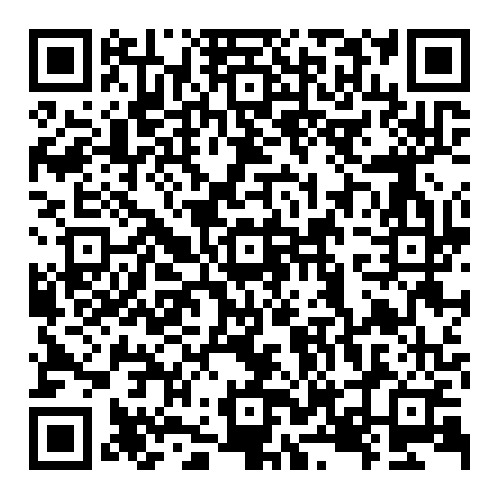
Learn more about the Conscious Discipline program from this chapter from our book, Trauma Informed Education.
This chapter explores the brain science behind connection-driven behaviour support and shows how safety, predictability, and relationship are essential for both students and staff.
Read the chapter or scan the QR code for access.
Introducing Trauma-informed Practices in a School
Dr. Krishnamoorthy: Parent engagement is such a hard piece to get right, and when it’s done well, it often reflects how far a school has come in building connection and community. Can you paint a picture of what things were like when you first arrived at Derby Hills, and what led you to explore a different approach to behaviour and discipline? Was there a particular moment or turning point that made you realise the old ways weren’t working?
Mr. Moffett: In my first year, we had a difficult custody issue involving a student. Her mum had some significant challenges, and the student herself was struggling. Custody had been given to another family member, and then the mum was trying to take it back. I remember one day sitting in my office—just 30 years old at the time—and I broke down in tears. Outwardly, people might have seen me as strong and capable, but in that moment, I felt overwhelmed. I cared deeply for this student, and it made me stop and think about the kinds of stressors our kids are carrying.
It made me ask: are we, as educators, truly being empathetic to their needs? And honestly, I don’t think we always have been. That moment planted the seed for me. One of the biggest shifts in becoming a trauma-informed educator is letting kids know you care—and letting teachers know it’s okay to care.

That shift—towards empathy and connection—has been transformative. I think back to that early experience with that student, and I know we’d handle things so differently now. Our system back then wasn’t set up to respond in a trauma-informed way. Today, we would wrap around that child and give her what she truly needed. That’s what pushed me toward this path.
I’m also someone who likes numbers and data. In my first year, we didn’t have a great system for tracking behaviour data. I literally had a Post-it note on my desk where I tallied every student I saw in my office. That year, I recorded over 500 office visits. It was overwhelming.
Fast forward to now—four years later—and we’ve reduced that number by about 70%. We’re in the hundreds instead of the high 500s. Some of that is due to real changes in student behaviour. But a lot of it is because our teachers now feel empowered. They have the skills, the tools, and the relationships to manage behaviour in the classroom themselves. A lot of those visits in the past were for minor issues that teachers just weren’t equipped to handle confidently. Now they are. And the strength of those relationships has made a big difference.
We know that when relationships are strong, engagement increases. And we’re always talking about the difference between engagement and compliance. That’s a huge distinction for us.
I don’t want compliance that comes from fear—where a student only does something because they’re scared they’ll get yelled at. I want engagement. I want that student to know I care so much about them that I would never ask them to do something unsafe or unloving. I want them to feel so invested in our school, and in the people in it, that they want to do the right thing. That’s the kind of culture we’re building.
Dr. Krishnamoorthy: I love how both the head and the heart are guiding your work. You had this powerful moment of empathy with a student that opened your heart, and then you backed it up with data and outcomes. It’s that rare combination.
Mr. Moffett: I’ve learned that if I can’t connect with someone’s heart, I’ll never reach their head. That’s true for our students and our staff. Heart first—always. Then we can talk about learning.

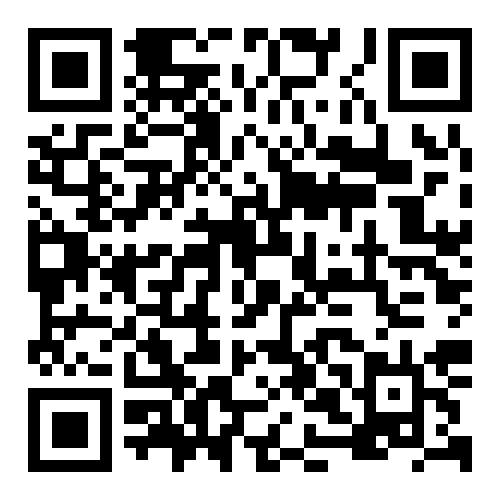
Does adopting a trauma-informed approach actually improve academic outcomes? A study led by Dr Krishnamoorthy and Dr Ayre found how multi-tiered, trauma-informed supports improved academic outcomes in First Nation students in Australia. The research evaluated the Trauma-Informed Behaviour Support (TIBS) program—co-designed with students, families, and educators—led to significant improvements in literacy and numeracy, particularly for students with reduced behavioural incidents. Published in the journal Nature, this is one of the first Australian studies to show how culturally grounded practices can transform both learning and wellbeing outcomes.
Read the article or scan the QR code for access.
Changing School Cultures
Dr. Ayre: What was the staff culture like when you first arrived? Were most teachers working from that traditional, consequence-based, disciplinarian approach to behaviour management that many of us were trained in? How did you begin shifting their confidence—from needing to exert control, to leading with love and connection? What helped them start to handle those minor behaviours in the classroom instead of sending them straight to the office?
Mr. Moffett: There’s one word I come back to again and again: empathy. That’s what allows me to connect with someone’s heart. I always try to offer examples that help teachers feel what their students might be going through. Being trauma-informed is about leading with love, not fear.
If I take that a step further, it’s about treating our kids with the same dignity and respect that we expect from our own supervisors. One thing we’ve been guilty of in education is being overly reactive. We’re very good at spotting something we don’t like and jumping on it—yelling, lecturing, or giving consequences—and expecting that’s going to change behaviour. But that kind of reaction doesn’t teach.
I want our teachers to respond, not react. And I want that response to be rooted in love and empathy. I ask them to think: “If I made a mistake, how would I want my supervisor to respond? Would I want them in my face yelling, or would I want them to help me learn from it?”

The goal of any consequence isn’t to hurt or shame—it’s to teach. We want to avoid the same behaviour happening again, and that only comes when the student understands the why, and feels safe enough to reflect.
Here’s an example I often use in training: Imagine you’re part of a first-grade teaching team. Your supervisor calls a mandatory meeting at 7:30 a.m., but one of your colleagues has a flat tire and can’t make it on time. She gets in at 8:00 a.m. What if your supervisor came in and said, “You let your team down, so I’m punishing the whole team by taking away your planning time today”? How would you feel?
Every teacher I’ve asked says, “That would be unfair. I’d be upset.” And then I ask, “How many times have we done something like that to our students?” One or two students misbehave, and we punish the whole class. When teachers hear that and it hits their heart, they start to understand that maybe some of our traditional practices are doing more harm than good.
Empathy opens the door for change. I tell staff: I want you to treat kids with the same respect and dignity that you would want from me as your leader. That’s where it starts.
We also have to be vulnerable. I have to be honest: I wasn’t always this way. I didn’t start my career as a trauma-informed educator. I made mistakes. If you asked my former principal, he’d say, “James, you’re saying things now that I wish you’d known back when you were a teacher.” And I’d say, “Absolutely.”
I’ve been in their shoes. I get it. That’s why I approach this work with empathy—for kids and for teachers. I want them to know: “I’ve been where you are. I’ve learned a better way. And now I’m here to support you.”
“When you know better, you do better.” That’s the mindset we need. My job as a leader is to help teachers know better—and then support them to do better. For our kids.

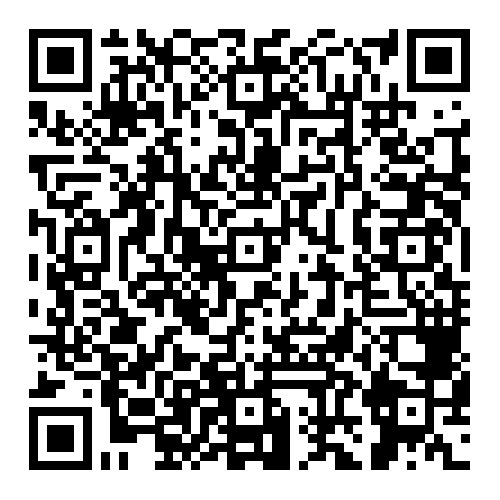 The Trauma Informed, Resilience Oriented Schools Toolkit offers a structured, school wide framework for shifting culture toward safety, connection, and healing. Designed for administrators, educators, support staff, and families, it includes action steps, implementation tools, real life case examples, and strategies for resilience and inclusion—all adaptable to schools of any size or resource level.
The Trauma Informed, Resilience Oriented Schools Toolkit offers a structured, school wide framework for shifting culture toward safety, connection, and healing. Designed for administrators, educators, support staff, and families, it includes action steps, implementation tools, real life case examples, and strategies for resilience and inclusion—all adaptable to schools of any size or resource level.
Explore the toolkit or scan the QR code for access.
Building a Sense of Belonging
Dr. Krishnamoorthy: You’ve talked about love and empathy. What else would you share with someone considering adopting a trauma-informed approach?
Mr. Gordon: Mr. Moffett: It starts with love and empathy, but another key piece is helping people understand the importance of school family—that deep sense of connectedness across the whole school community. There are many small but intricate pieces that need to come together to build that.
We also focus on customer service. I know that’s not something people usually associate with schools, but we really are in the business of engaging with people. So I always ask: What does it feel like when someone walks into your school building? Do they feel welcomed? Do they feel like this is a place people want to be? Or does it feel cold, business-like, with little human connection?
My assistant superintendent introduced a customer service training activity that really resonated with me. I brought it back and ran the activity with all our teachers. Then he came in and delivered it to our classified staff—our aides, office staff, and even our parents—so that everyone received the same training.
It’s a simple framework, but very powerful. We ask:
- What does good customer service look like, sound like, and feel like?
- What does it not look like, sound like, or feel like?
Some of the insights that came out of those conversations were profound. For example, one person said, “Good customer service doesn’t look like being ignored.” Our front office is incredibly busy—phones ringing, doors buzzing, students needing help—but even amidst that, we must ensure that every person we interact with feels valued. They should never feel like a burden or an interruption.

Our goal is to work together as a school family to ensure every person who steps through our doors feels welcomed and appreciated. That commitment has become a defining feature of our school culture.
We’ve had over 30 schools visit us this year from around Kansas and beyond. The most consistent feedback we receive is how warm and welcoming our school feels. They say the front office staff are amazing. They say our teachers are approachable and generous with their time and knowledge.
But the feedback that means the most to me is about our kids. Visitors often say, “Your students are so kind and polite. They approached us and started conversations. That doesn’t happen everywhere.”
And I agree—that’s huge. I read something recently on Twitter that stuck with me:
“You know your culture is changing when students start the conversation.”
Teachers are usually good at greeting kids in the hallway: “Hey, how are you?” But when students are the ones initiating those conversations—when they approach you, smile, and say, “Hey, I’m glad you’re here today,” or “Do you need help finding something?”—that’s when you know you’ve turned a corner.
That’s the biggest compliment a visitor can give us: that they felt seen, welcomed, and cared for by our kids.

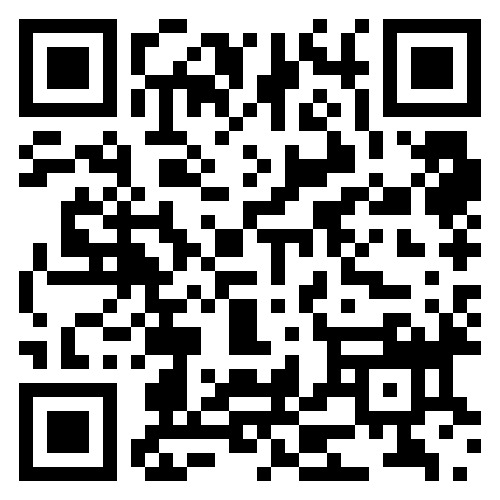
Explore The Need for Belonging – part of the All Connected: A Place for Belonging series. This concise, animated segment illustrates how belonging begins with our relationship to ourselves and ripples outward into relationships with others—an essential insight for educators aiming to cultivate true connection in school environments.
Watch the video or scan the QR code for access.
Obstacles to Embedding Trauma-Informed Practices
Dr. Krishnamoorthy: It’s the little things—looking a child in the eye, saying hello, acknowledging them. These are not just policies or strategies. They’re attitudes. They shape the school climate and create a feeling of warmth that you simply can’t fabricate. When you started to make changes, were there staff who were hesitant or slow to come on board? What was that experience like, and how did you manage it?
Mr. Moffett: I wish I could go back and do some things differently. I was so passionate about the trauma-informed approach that I expected everyone else to get it right away. When they didn’t, I remember thinking, Why don’t you understand this?
Looking back, I realise their hesitation wasn’t cynical. It was uncertainty. The approach I was introducing was drastically different from what we’d done in education. Things like telling a child “I love you” or teaching social-emotional skills alongside academics—that was new territory for many. Education had been so singularly focused on academics for so long.
I should have spent more time communicating the why, but even that isn’t always enough. The why needs to be paired with the how, along with love and support. People need time and care to shift their deeply held practices and beliefs. I was guilty of assuming that just explaining the rationale would be enough.

Early on, I was very clear: “This is the direction we’re heading. These are the interventions we’re adopting.” I included it in our school strategic plan and said, “If you’re not ready to embrace this philosophy, I want you to have the opportunity to find somewhere that’s a better fit for you.” We had some staff leave. That’s okay. I still talk to many of them. But I also know that for me to enjoy coming to work, I need to work in a place where the philosophy aligns with my values. We had people leave—and others join—and that’s been a positive evolution for our school.
Our interview process also changed significantly. I don’t ask many academic questions anymore. I believe I can coach someone to become a better instructional leader. What I can’t teach is heart. So now I ask: Do you love kids? Do you believe every child can succeed? Are you willing to work hard for every student, not just the easy ones? If the answer is yes, I know we can build everything else together.
Dr. Krishnamoorthy: I’m curious about another common concern we hear from teachers. They’ll say: “It’s great to be loving and supportive, but what about the kids who are doing the right thing?” How do you balance that? Have you come across that tension?
Mr. Moffett: Absolutely, we’ve heard that. One of the biggest shifts we made at Derby Hills was recognising that the strategies traditionally reserved for Tier 2 and Tier 3 interventions—things like mindfulness, emotional regulation strategies, relationship-based approaches—are beneficial for all students.
So we made those Tier 1 interventions. Now, every child has access to them, regardless of their background, behaviour, or needs. Emotional regulation is not just a skill for “troubled kids.” It’s a life skill. Whether a child comes from wealth or poverty, calm or chaos, they all need to learn how to manage emotions and stress.
Our social worker often points out how many of our students with high anxiety come from homes with high expectations. Their families may be successful, but these kids still need support. Some have even qualified for 504 plans just for anxiety. So when teachers say, “I don’t have time for that one kid,” my response is always, “You don’t have time not to.”
There are three mindset shifts I always talk about:
- I can’t expect things from my students that I’m not willing to give myself.
- Relationships are the first and most powerful intervention.
- We can no longer just “send kids away” when there are challenges.
“That’s why I tell teachers: Build that relationship first. And know I’m here to support you. We are a family. A trauma-informed school is a system of supports—for both students and staff.”
We used to say, “Go to the principal,” or “Let the counsellor handle it.” That can’t be the default anymore. I need teachers to be that first intervention. When a student acts out, I need the teacher to engage, not eject. Because if the student only builds a relationship with me, they’ll start acting out just to leave the classroom and spend time with me.
That’s why I tell teachers: Build that relationship first. And know I’m here to support you. We are a family. A trauma-informed school is a system of supports—for both students and staff.
Pedagogical Strategies
Dr. Krishnamoorthy: You mentioned mindfulness and your school social worker. What other practical structures have you implemented school-wide that have been especially helpful?
Mr. Moffett: After doing a lot of research, we sat down and created a list of trauma-informed interventions we wanted to offer every student—not just those who were struggling. That was important to us: making sure these supports weren’t restricted to a small group.
- Embedded Social Emotional Curriculum: We use Second Step as our core social emotional curriculum, and every student receives lessons twice a week. What’s different at our school is that teachers deliver the lessons, not the counsellor. This is deliberate. When teachers teach the content, they hear the stories, learn what’s going on in their students’ lives, and build stronger relationships. When I used to step out during the counsellor’s lesson, I missed out on valuable insight about my class. I didn’t realise how much I was missing.
- Daily Mindfulness Practice: Mindfulness happens every single day in every classroom. It’s easy to implement—teachers just press play on online programs like Cosmic Yoga (especially popular in early years), Mind Yeti, or GoNoodle. But here’s the expectation: teachers engage with the students, not just supervise from the back. It’s about modelling, participating, and building community.
- Peace Corners in Every Room: Every classroom and learning space—including the office, art, music, and PE rooms—has a Peace Corner. It’s not a punishment zone or a time-out. It’s a self-regulation space students can use when they feel overwhelmed, anxious, or frustrated. The goal is for students to self-select, take time to regulate, and return to learning when ready. The name “Peace Corner” came from a staff vote. One teacher challenged the idea of calling it a “safe space,” saying, “The whole classroom should feel safe.” That resonated with us. So we all agreed on “Peace Corner”—a shared language used across the school.
- Zones of Regulation: A Cultural Shift: This is probably our biggest bang-for-buck strategy. Students use the Zones of Regulation daily to identify how they’re feeling. I model it in the morning announcements:
- “I’m in the green—got up early, had coffee, I’m ready to go!”
- “I’m in the blue—stayed up too late watching the game, feeling tired.”
Students respond to that vulnerability. They check in with me throughout the day: “Are you still in the blue? Can I help you get to green?” That level of empathy from kids is incredible. But we also emphasise: knowing your zone isn’t an excuse not to learn. We say, “No matter your zone, you have a job to do. So learn what coping skills work for you.” It’s about empowerment and accountability.
- Teaching About the Brain: Every student receives 20 minutes daily of social emotional learning. This includes:
- Second Step (twice a week)
- Class meetings (twice a week)
- Weekly lessons about the brain (once a week)
We use Conscious Discipline visuals to teach students about the three brain states: executive, emotional, and survival. These posters are everywhere—from classrooms to my office—and they’re tools for both staff and students.
Next year, we’ll roll out a full 24-lesson sequence on the brain, scaffolded across the year for all students, not just targeted groups.
- Planned Breaks and Brain Resets: Some students need physical or sensory breaks. Rather than seeing this as “giving up control,” we view it as being responsive. Kids can take a break—run to the fence and back, jump rope ten times, or stretch—and then return to class. We have about 10 students out of nearly 600 who use this regularly, and teachers have built individual systems with them. The key to success? Explicit expectations. When teachers say, “Kids will misuse this,” my response is, “Kids misuse anything without clear expectations.” Clarity and consistency are essential.
- Private Corrections, Public Praise: We’ve eliminated clip charts, card systems, and public shaming. No more writing names on the board or calling students out in front of peers. Instead, we:
- Praise publicly when students do well.
- Address challenges privately, one-on-one.
This preserves dignity and supports connection, not disconnection.
- Clear Behavioural Systems and Shared Data: For minor behaviours, teachers must first try at least three interventions (e.g., Peace Corner, relationship repair, regulation strategies) before referring the student to me. We’ve trained staff on what constitutes minor vs. major behaviour.
- For minor behaviours, the teacher communicates with the family.
- For major behaviours, I handle the intervention and the parent contact.
We also make behaviour data visible to students. A hallway poster shows office referral numbers month by month. It’s a visual reminder that we—staff and students—are a school family working to get better together. In one month, with almost 600 students, I only saw seven for behaviour. That’s a huge shift.
- Behaviour as a Learning Opportunity: The mindset shift we promote is: Would you send a student to the office for not knowing their times tables? Then why for not knowing self-regulation? We must teach behavioural skills the same way we teach academic ones.
- From Reaction to Prevention: This shift has changed my role as principal. I used to spend most of my day reacting to behaviour. Now, I have more time to support teachers as an instructional leader. Recently, our district conducted a 3-day instructional review with a team of eleven observers. They watched every teacher, held student and teacher focus groups, and gave us detailed feedback. Their comment? “We’ve never seen a school with so much instructional time on-task.” That means less disruption, less redirection, and more learning. Why? Because the foundation of safety, belonging, and regulation is in place.
- Impact Beyond the School Gates: One of the most powerful indicators of success is when families take what we do and use it at home. I’ve received multiple emails from parents saying, “We built a Peace Corner at home.” Kids are using these strategies with siblings, regulating themselves during conflicts, and rejoining their family routines in better states.
These aren’t just school-based strategies. They are life skills.
Dr. Krishnamoorthy: I appreciate your emphasis on teachers participating in the social emotional learning—not just supervising or outsourcing it. That shared experience deepens both teacher and student self-awareness. It’s a powerful and often overlooked form of self-care for educators too.
Dr. Ayre: Yes, that part really struck me. In Australia, teachers often have non-contact time where someone else delivers SEL, and teachers use it for planning or admin. It becomes someone else’s responsibility. But this is a mindshift: being present, showing up for those lessons, just like you would for playground duty even when it’s not your assigned day—because you care. There’s a tendency to treat SEL as a special subject someone else should teach. But as you’ve shown, being part of that work, teaching it with students—not to them—is a game-changer.
 Mr. Moffett:
Mr. Moffett: Exactly. I want us to approach behaviour the same way we do academics. If a student has a learning difficulty, we offer targeted support. But when a child has a behaviour lag or emotional regulation issue, we tend to punish and hope for change. That doesn’t work. We need to teach the missing skills and support the child through it.
And we also need to support teachers. That’s why we have a clear behaviour referral system. Teachers are trained to implement classroom-based interventions first. When it’s a minor behaviour, the teacher handles it and contacts the family. When it’s a major incident, it comes to me.
We share our data with students, and that visual accountability works. Four years ago, we had over 500 office visits in a year. Now, in some months, it’s as low as seven.
Dr. Ayre: The classic example is I send them to the office because they’ve misbehaved and expect their behaviour to improve, but I don’t send them to the office because they can’t do their two times tables and expect them to come back from the office a maths whizz.
Mr. Moffett: Yeah, so I guess the balance is I need to support teachers. One thing we have in place is our referral system. We have interventions like the Peace Corner, self-regulation model, and natural consequences. If it’s a minor behaviour, we tell teachers to try at least three of those interventions first. If the child is still escalating, then a written referral can be made, and the child comes to me.
We spend a lot of time talking about minor versus major behaviours. Major behaviours come directly to me. Minor behaviours are things teachers are empowered and trained to manage with these interventions. Most of the time, they know the right strategy, and it works.
On the communication side, if a teacher handles a minor behaviour, they call home: “Hey, this is what happened today. These were the interventions we used. We’re good now.” If it’s a major behaviour that comes to me, then I’m the one who calls home.
One thing I think we’ve done well is putting behavioural data in the hands of our teachers and making it visible to kids. In our hallway, there’s a poster showing how many office referrals we have, month by month. It helps students see that we’re working together as a school family to improve. Four years ago, we had over 500 office visits. This year, with nearly 600 kids, there were months where I only saw 7 students. Even in high months, it might be 20. That visual makes a difference.
Dr. Krishnamoorthy: Those outcomes are amazing for any school. Are there any stories that stand out in your mind that show the impact this work is having?
Mr. Moffett: We’ve had parents reach out about our Peace Corners. These are places we use to help kids self-regulate. It’s powerful when a parent emails to say, “Hey, we built our own Peace Corner at home.” The kids have taken what they’ve learned here and brought it home. I’ve had parents say,
“We’re not having the friction we used to. Our child is using the Peace Corner when they’re upset and coming back out ready to have a productive day.”
We’ve had nine or ten of those emails. That kind of transfer of learning is a real success. There are kids who used to see me often for behaviour issues, and now I have to go find them in their classrooms just to say hello.
This approach has also shifted what I do as a principal. In the beginning, I spent most of my time reacting to behaviour. Now, I have time to be an instructional leader. This year, our district conducted a three-day instructional review. A team of eleven observed every teacher multiple times and held student and teacher focus groups. At the end, they told me, “We’ve never been in a school with so much instructional time on task.”

Teachers aren’t constantly stopping to redirect behaviour. They feel in control—or rather, they share control with students. And for those who say, “I don’t have time for this approach,” I say, “You do.”
You can spend five minutes being proactive before the lesson or spend 15-20 minutes managing behaviour during it.
That’s the kind of impact we’re seeing: more time on task, fewer referrals, and kids applying what they learn at school in their homes.
Dr. Krishnamoorthy: It sounds like you’re also starting to make inroads with the wider community.
“You can spend five minutes being proactive before the lesson or spend 15-20 minutes managing behaviour during it.”
Mr. Moffett: That’s what we’re working on. There are still misconceptions about what we’re doing. Some people think we’re letting kids get away with bad behaviour. That’s just not true. We’re not lowering expectations; we’re changing how we respond to behaviour, and that makes all the difference.
Caring for Teachers
Dr. Krishnamoorthy: It sounds like your teachers are deeply committed. What strategies do you have in place to support their wellbeing?
Mr. Moffett: Teaching is one of the most emotionally demanding jobs out there. I tell my staff, “If this feels easy every day, something’s probably not right—you’re likely giving less than what these kids need.” So I take staff wellbeing seriously, both as a matter of care and sustainability.
We’ve created regular opportunities for staff to recharge. One of our main initiatives is Wellness Wednesday—once a month we block out 30 minutes where staff participate in movement-based activities. We’ve done yoga, bootcamps, partnered with the YMCA, and more. On those days, I tell them, “Come in your sweats—I want you to be part of this, not just supervise it.”
We also integrate low-barrier self-care challenges, where staff track small wellbeing actions—things like getting eight hours of sleep, drinking water, or doing a random act of kindness. Those who complete the week go into a draw to win something relaxing, like a massage. But beyond the incentive, the message is: you matter too.
We’ve made sure there’s a massage chair in the staff lounge, and we do monthly appreciation lunches—not because food fixes burnout, but because it says: we see you. Right before the holidays, we run the 12 Days of Christmas, with small gifts each day to lift spirits. These practices aren’t just about self-care; they’re about feeling valued, connected, and seen.
Chapter Summary
-
-
- Traditional discipline approaches were not producing meaningful change in student behaviour. Initially, over 500 behavioural office referrals were recorded annually. Since adopting trauma-informed practices, these referrals have reduced by approximately 70%.
- Empowering teachers to manage minor behaviour incidents in their own classrooms is essential. This requires building their confidence through targeted training, tools, and ongoing support.
- Strong, trusting teacher-student relationships enhance student engagement with academic content and support long-term learning outcomes.
- A trauma-informed school culture is grounded in connection and care, not fear or compliance. The goal is to foster relationships where students feel safe, seen, and supported.
- Behavioural incidents should be treated as teachable moments. The purpose of consequences is not punishment but instruction—opportunities to reteach expectations and prevent recurrence.
- Even in high-pressure environments like the front office, maintaining warmth, respect, and a sense of welcome reinforces a whole-school culture of value and belonging.
- Social-emotional learning (SEL) should be a universal entitlement, delivered by classroom teachers who model regulation and co-participation alongside their students.
- Behavioural interventions should be treated with the same urgency and structure as academic interventions. A child struggling with regulation deserves layered supports, not exclusion or punishment.
- Supporting staff wellbeing is foundational. This includes explicit self-care strategies, but more importantly, ensuring teachers feel recognised, appreciated, and respected within the school community.
Listen to our full interview with Mr. James Moffett on our Trauma Informed Education Podcast.
Listen here or scan the QR code for access.
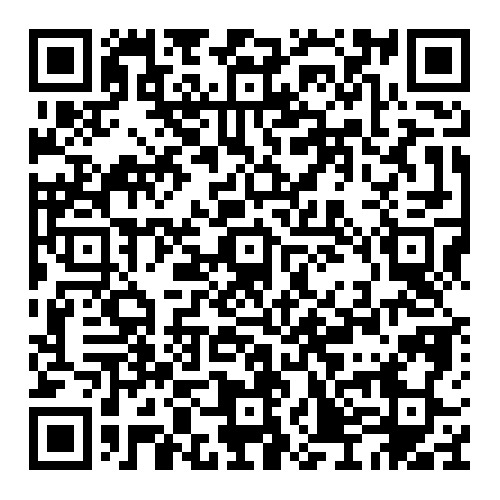
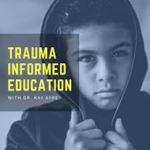
REFERENCES
Ayre, K. & Krishnamoorthy, G. (Hosts). (2019, Jan 08). Spotlight: Derby Hills Elementary with James Moffett [Audio podcast episode]. In Trauma Informed Education. SoundCloud https://on.soundcloud.com/tWYnjhGgIfYCWw8uAc
Krishnamoorthy, G., Harrison, E., Ayre, K., Ahmadi Forooshani, S., Berger, E., Rees, B., Wheeler, K., Eiby, N., Ong, S., Dallinger, V., & Ulhaq, A. (2024). The impact of trauma-informed practices on academic outcomes of First Nations children: A pilot study of culturally responsive supports in Australia. Humanities and Social Sciences Communications, 11, Article 1385. https://doi.org/10.1057/s41599-024-03892-8
 Our staff have embraced it wholeheartedly. They see the incredible benefits for our students every day. Jim has been a guiding light for us. We’ve even had the chance to present at national conferences and connect with like-minded educators across the country.
Our staff have embraced it wholeheartedly. They see the incredible benefits for our students every day. Jim has been a guiding light for us. We’ve even had the chance to present at national conferences and connect with like-minded educators across the country. Relationships are central to everything we do. That’s not to say academics aren’t important—they are. But the way we get to academics looks different here. We prioritise fun. My belief is that if kids want to be at school, that’s the first and biggest step. Once they want to be here, we can take care of the rest.
Relationships are central to everything we do. That’s not to say academics aren’t important—they are. But the way we get to academics looks different here. We prioritise fun. My belief is that if kids want to be at school, that’s the first and biggest step. Once they want to be here, we can take care of the rest. That shift—towards empathy and connection—has been transformative. I think back to that early experience with that student, and I know we’d handle things so differently now. Our system back then wasn’t set up to respond in a trauma-informed way. Today, we would wrap around that child and give her what she truly needed. That’s what pushed me toward this path.
That shift—towards empathy and connection—has been transformative. I think back to that early experience with that student, and I know we’d handle things so differently now. Our system back then wasn’t set up to respond in a trauma-informed way. Today, we would wrap around that child and give her what she truly needed. That’s what pushed me toward this path. The goal of any consequence isn’t to hurt or shame—it’s to teach. We want to avoid the same behaviour happening again, and that only comes when the student understands the why, and feels safe enough to reflect.
The goal of any consequence isn’t to hurt or shame—it’s to teach. We want to avoid the same behaviour happening again, and that only comes when the student understands the why, and feels safe enough to reflect. The Trauma Informed, Resilience Oriented Schools Toolkit offers a structured, school wide framework for shifting culture toward safety, connection, and healing. Designed for administrators, educators, support staff, and families, it includes action steps, implementation tools, real life case examples, and strategies for resilience and inclusion—all adaptable to schools of any size or resource level.
The Trauma Informed, Resilience Oriented Schools Toolkit offers a structured, school wide framework for shifting culture toward safety, connection, and healing. Designed for administrators, educators, support staff, and families, it includes action steps, implementation tools, real life case examples, and strategies for resilience and inclusion—all adaptable to schools of any size or resource level. Our goal is to work together as a school family to ensure every person who steps through our doors feels welcomed and appreciated. That commitment has become a defining feature of our school culture.
Our goal is to work together as a school family to ensure every person who steps through our doors feels welcomed and appreciated. That commitment has become a defining feature of our school culture. Early on, I was very clear: “This is the direction we’re heading. These are the interventions we’re adopting.” I included it in our school strategic plan and said, “If you’re not ready to embrace this philosophy, I want you to have the opportunity to find somewhere that’s a better fit for you.” We had some staff leave. That’s okay. I still talk to many of them. But I also know that for me to enjoy coming to work, I need to work in a place where the philosophy aligns with my values. We had people leave—and others join—and that’s been a positive evolution for our school.
Early on, I was very clear: “This is the direction we’re heading. These are the interventions we’re adopting.” I included it in our school strategic plan and said, “If you’re not ready to embrace this philosophy, I want you to have the opportunity to find somewhere that’s a better fit for you.” We had some staff leave. That’s okay. I still talk to many of them. But I also know that for me to enjoy coming to work, I need to work in a place where the philosophy aligns with my values. We had people leave—and others join—and that’s been a positive evolution for our school. Mr. Moffett: Exactly. I want us to approach behaviour the same way we do academics. If a student has a learning difficulty, we offer targeted support. But when a child has a behaviour lag or emotional regulation issue, we tend to punish and hope for change. That doesn’t work. We need to teach the missing skills and support the child through it.
Mr. Moffett: Exactly. I want us to approach behaviour the same way we do academics. If a student has a learning difficulty, we offer targeted support. But when a child has a behaviour lag or emotional regulation issue, we tend to punish and hope for change. That doesn’t work. We need to teach the missing skills and support the child through it. Teachers aren’t constantly stopping to redirect behaviour. They feel in control—or rather, they share control with students. And for those who say, “I don’t have time for this approach,” I say, “You do.”
Teachers aren’t constantly stopping to redirect behaviour. They feel in control—or rather, they share control with students. And for those who say, “I don’t have time for this approach,” I say, “You do.”![]() Listen to the full interview on the Trauma-Informed Education Podcast
Listen to the full interview on the Trauma-Informed Education Podcast







